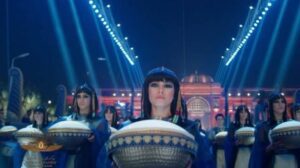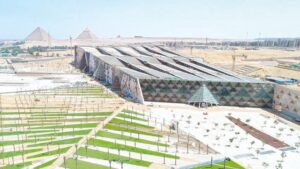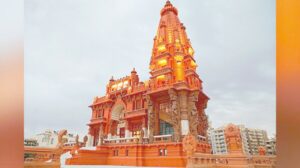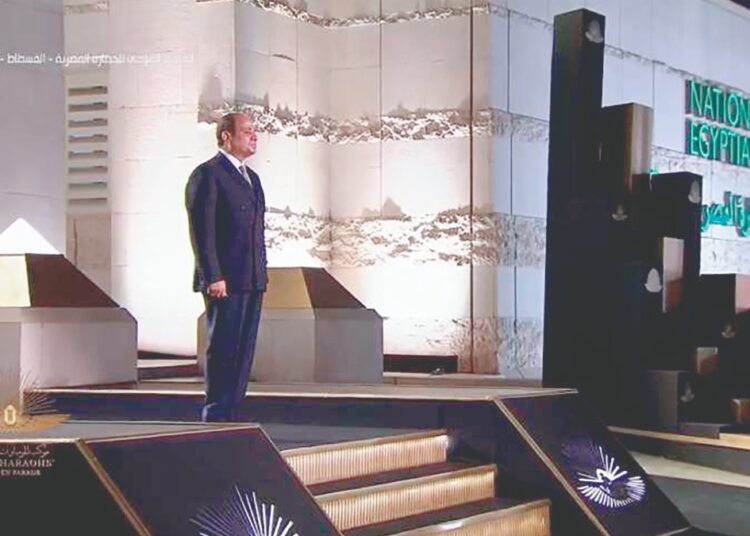On April 3, the world watched Egypt’s huge Golden Mummies Parade with great interest and passion.
The event, organised on a global level to reflect the great ancient Egyptian civilisation, witnessed the transfer of 22 royal mummies from the Egyptian Museum in Tahrir to the National Museum of Egyptian Civilisation in Fustat.

The fascinating event, which marked the opening of the new National Museum of Civilisation, was aired on over 200 international satellite channels from 30 countries.
That was not the first goal scored by President Abdel Fattah El Sisi in the antiquities and tourism sector.
Since the president came to power seven years ago, he has been giving directions to preserve the archaeological heritage as he wants to revive the great historical identity of Egypt.
He understands the importance of the historical face of Egypt, so he was keen to increase awareness about archaeological and historical sites among young people and children and also achieve economic returns from attracting tourists.
Despite that the past two years of challenges for Egypt as well as the whole world due to the spread of the coronavirus pandemic, Egypt continued its national projects, including opening and refurbishing a large number of major museums in the governorates.
During the past seven years, 20 museums were established and restored in various governorates, including the National Museum of Egyptian Civilisation, the Museum of Islamic Art in Cairo, Mallawi Museum in Minya.

Egyptian Civilisation Museum and Ain el-Sira Lake
One of the great achievements of President Sisi in the antiquities sector is the opening of The National Museum of Egyptian Civilisation, which is considered one of the most important national projects adopted by the state.
The museum was designed by
Dr Al-Ghazali Kusaiba, Professor of Architecture at the Faculty of Fine Arts in Helwan university. The cost of the museum is estimated at two billion pounds. It is considered one of the largest international museums, and the only museum of its kind in Egypt, the Arab world, the Middle East and Africa, as it reflects the richness and diversity which the Egyptian civilisation enjoyed during various ages, from prehistoric times to the present day.
Given the importance of the location of the National Museum of Civilisation, President Sisi gave instructions for a national project to completely remove the slums from the Magra el-Ayoun area, develop Ain el-Sira Lake, build a number of bridges, and new traffic axes to create an integrated tourist attraction between the museum, Islamic civilisation and antiquities in the Fustat area so that the tourist can spend a whole day in this area.
After its development, a visitor can easily take a tour of neighbouring places with their complex of religions and many of the archaeological landmarks of the area.
Tahrir Square development
As Tahrir square is the heart of Cairo, it was important to develop it.
President el Sisi launched a general project to develop Khedivial Cairo, which included the development of Tahrir Square and the surrounding buildings as an archaeological gem and tourist attraction.
The heart of the square is now decorated with an obelisk of King Ramses II, which was transferred from an archaeological site in Sharkia Governorate. The obelisk is surrounded by four statues of rams from the Karnak Temple in Luxor to give the character of the ancient Egyptian civilisation to the place.
The facades of the surrounding buildings were also painted and restored in keeping with the historical face of Khedivial Cairo.

Renovated and restored museums
Over the past seven years, President Sisi inaugurated several museums, including Museum of Islamic Art, Matrouh Antiquities Museum, Sohag National Museum and others.
The Museum of Islamic Art was opened in January 2017 after its redevelopment and restoration. It was affected by brutal terrorism attack after the explosion that occurred in front of the Cairo Security Directorate on January 24, 2014. The explosion affected the museum and its rare collection.
The president also inaugurated in March 2018 the Matrouh Antiquities Museum, which is a panorama of artifacts from different historical eras that represent the region and includes about 1,000 artifacts from different ages.
Also in August 2018, the Sohag National Museum was opened at a cost of LE72 million. On displays are 945 artifacts from archaeological sites in the Upper Egyptian governorate.
The Baron Empain Palace in Heliopolis was opened last year after the completion of its first comprehensive restoration and development. Renovation began in July 2017. The palace is a distinctive historical building that tells the history of the Heliopolis neighbourhood.
Last year, President Sisi inaugurated the Sharm el-Sheikh Museum, the Hurghada Museum, and Kafr el-Sheikh National Museum, which is the second archaeological museum in the Delta after Tanta Museum. The LE60 million Kafr el-Sheikh Museum houses 1,200 artifacts.
In 2019, another museum inaugurated in Cairo is the Royal Vehicle Museum in Bulaq Abul-Ela, which was opened after a 19-year closure for refurbishment costing LE63 million. On display are 42 vehicles.
In May this year, The Ministry of Tourism and Antiquities opened two new Museums in the Cairo International Airport (Terminal 2 and 3) to give visitors and transit travellers a glimpse of Egypt’s rich history and treasures.
The new Airport Museum in Terminal 2 displays 304 artifacts on an area of 100 square metres.
The airport’s artifacts feature different eras of the Egyptian civilisation, including the ancient Egyptian, Coptic and Islamic periods. They were selected from a number of museums, including the stores of the Egyptian Museum in Tahrir, the Suez Museum, and the Graeco-Roman Museum
Among the recent openings, the first factory for the production of archaeological replicas was inaugurated in Obour City, east of Cairo last March.






Discussion about this post